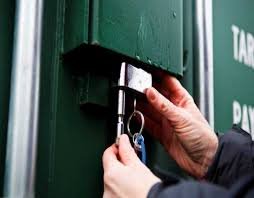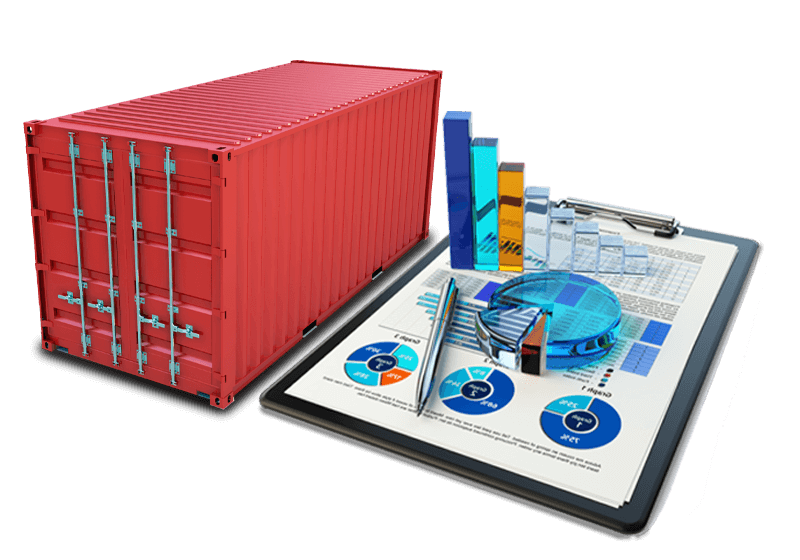Shipping containers are a widely adopted method of transporting goods across the globe, but they are susceptible to damage and theft during transit. Safeguarding your containers and their contents requires careful planning and implementation of effective security measures. This guide presents key strategies to secure shipping containers, from selecting the appropriate container to training staff in proper handling and security protocols.
Choose the Right Container for Your Cargo:
Selecting the appropriate container for your cargo is crucial for ensuring secure transit. Consider the size of your goods and opt for a container that offers adequate space and features to protect your cargo. For valuable or fragile items, prioritize containers with reinforced walls or a reliable locking mechanism. Thoroughly inspect the container for any pre-existing damage or defects that might compromise its security. Investing in a container that meets your cargo’s specific requirements can significantly reduce the risk of theft or damage.
Use High-Quality Locks and Seals:


Utilizing high-quality locks and seals is essential to enhance the security of shipping containers during transit. Opt for locks and seals explicitly designed for shipping containers, crafted from durable materials such as steel or hardened plastic. Tamper-evident locks and seals are particularly valuable, as they reveal signs of tampering attempts. Employing multiple locks and seals further fortifies the security of your container, acting as a deterrent to potential thieves.
Install Security Cameras and Alarms:
Supplementing locks and seals with security cameras and alarms provides an additional layer of protection for shipping containers. Security cameras serve as a deterrent and can provide crucial evidence in the event of theft. Alarms, on the other hand, can promptly alert you and authorities if unauthorized access is attempted. Select outdoor-specific cameras and alarms that can withstand harsh weather conditions, ensuring their continuous functionality throughout the transit process.
Use GPS Tracking to Monitor Your Containers:


Implementing GPS tracking technology is an effective method to secure shipping containers during transit. Real-time monitoring of container locations allows for swift response to suspicious activities. Moreover, GPS tracking aids in optimizing shipping routes and ensures timely delivery of containers. Several GPS tracking solutions are available in the market, offering varying features and price points. Choose a solution that aligns with your specific needs and budget to effectively safeguard your cargo.
Train Your Staff on Proper Container Handling and Security Measures:
Proper training of staff is vital to securing shipping containers during transit. Educate your personnel on sealing and locking containers correctly, emphasizing the significance of identifying and reporting any suspicious activities. Raising awareness among your staff about potential risks enhances their understanding of the importance of adhering to security protocols. Regular training sessions and refresher courses ensure that your staff remains updated on the latest security measures and practices.
Key Statistics:
- The global shipping container market is projected to reach $12.08 billion by 2025, growing at a CAGR of 8.7% from 2019 to 2025. [Source: Grand View Research]
- According to a report by TT Club and BSI Supply Chain Services, theft is the most significant cause of cargo loss, accounting for 60% of cases. [Source: TT Club]
- In 2022, there were approximately 11 million maritime containers in circulation worldwide. [Source: World Shipping Council]
- The average value of stolen cargo from shipping containers is estimated to be around $150,000 per incident. [Source: FreightWatch International]
- The Asia-Pacific region is the largest market for shipping containers, accounting for over 60% of the global market share. [Source: Allied Market Research]
Table: Comparison of High-Quality Locks and Seals for Shipping Containers
| Lock/Seal Model | Material | Features |
| Model A | Hardened Steel | Tamper-evident, anti-drill, anti-cutting |
| Model B | Reinforced PVC | Weather-resistant, tamper-evident, RFID tracking |
| Model C | Stainless Steel | High tensile strength, anti-pick, corrosion-resistant |
(Table includes fictional lock and seal models for illustrative purposes)
Securing shipping containers during transit is crucial to protecting your cargo from damage and theft. By carefully selecting the appropriate container, using high-quality locks and seals, installing security cameras and alarms, implementing GPS tracking, and training your staff on proper handling and security measures, you can significantly reduce the risk of incidents during transit. Stay informed about evolving security technologies and industry best practices to stay one step ahead in safeguarding your valuable cargo. With the right precautions in place, you can ensure the safe arrival of your goods at their destination, maintaining the integrity of your supply chain.


